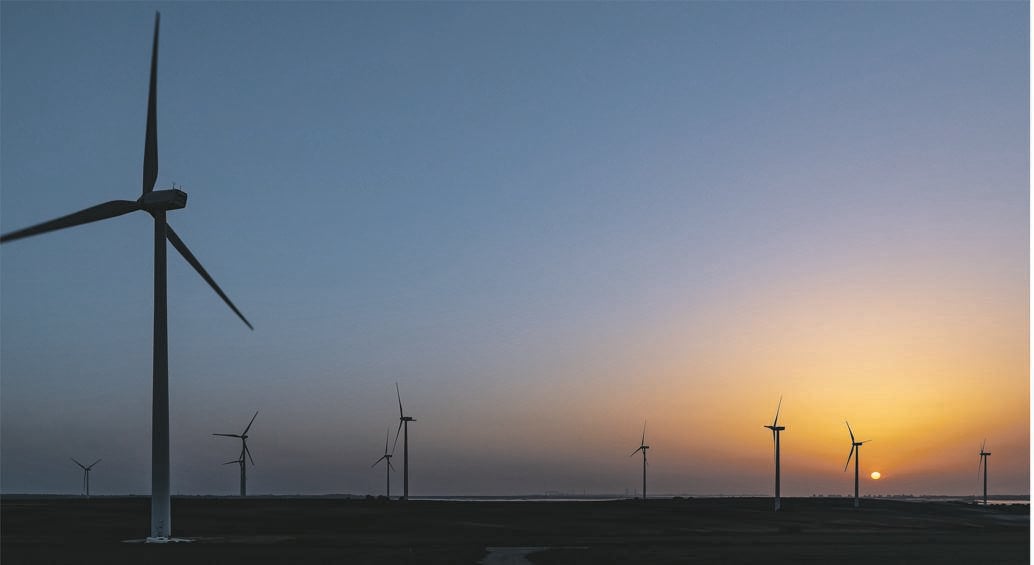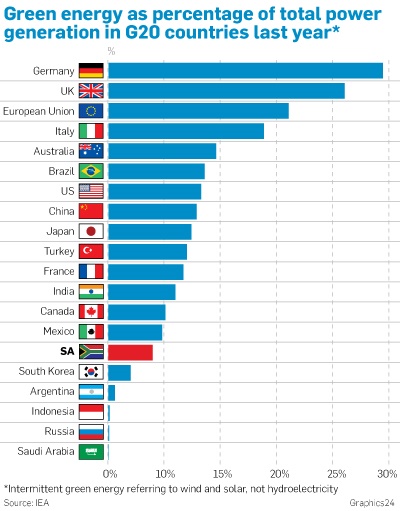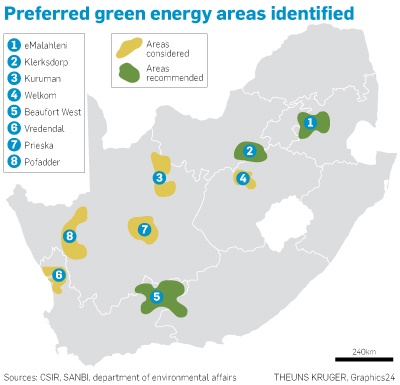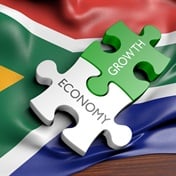
With wind energy established in South Africa over the past decade and now contributing almost 3.4GW to the energy mix, the industry is looking to leapfrog into the energy-hungry Southern African Development Community (SADC) while addressing carbon emission concerns at the same time.
At the ninth annual Windaba wind energy conference in Cape Town this week, Atef Marzouk, the head of the African Union Commission’s department of infrastructure and energy, said the commission’s top priority was “for every African to have access to affordable and sustainable energy by 2030”.
But less than 43% of the population of sub-Saharan Africa has access to electricity, and almost 80% of that power is fossil-fuel dependent, he said.
“Africa must change her energy development story and turn radically towards a more sustainable path using clean and renewable sources,” he said.
Read: The new power generators
This is possible as the price of renewable energy technology, particularly wind and solar, has “declined rapidly”.
Thus there are “enormous opportunities” – from providing access to electricity to generating economic growth and jobs – while addressing the climate crisis.
This provided impetus for the announcement at the Windaba of WindSADC, a new regional association that will work with private-sector companies that are creating wind energy projects in southern Africa.
The nonprofit industry body is a partnership between the Africa-EU Energy Partnership, the Global Wind Energy Council, the SA Wind Energy Association and the SADC Centre for Renewable Energy and Energy Efficiency.
WindSADC would ensure that wind power was fully utilised across 16 countries to contribute to universal access to energy in southern Africa, which would boost employment, skills and economic development, said the partners.
An SADC market for wind power, combined with the Integrated Resource Plan commitments, could also stimulate the local manufacturing industry for the production of turbine and mast components.
Read: Green power in a crisis
Spanish company Gestamp Renewable Industries has set up a wind turbine mast factory in the Atlantis special economic zone north of Cape Town.
Janek Winand, the managing director of Siemens Gamesa Renewable Energy, said that, although they were procuring wind towers from South Africa, they were more expensive than imports. He believed that competition was needed to bring prices down.
“When there is a stable pipeline of projects, you’ll see manufacturing follow,” said Winand.
He said 1 600MW of wind procurement a year until 2030 created “sufficient certainty to build an industry that can compete on the global market”.
And developing the ability to export – regionally, across the continent and globally – meant manufacturers were not wholly reliant on a local wind energy market, added Winand.
It would also be worthwhile to focus on particular components that could be produced competitively in South Africa, and make those part of the required local procurement standards the independent power producers have to agree to.
Then exports would begin to take place, he said.
Javier Pascual, Nordex Energy’s managing director, also suggested that, in much the same way the local automotive industry operated, South Africa should start assembling components that are currently being manufactured abroad.
The development of local manufacturing for wind power could also contribute to a just transition from coal, as Mineral Resources and Energy Minister Gwede Mantashe, who gave the opening speech at Windaba, warned that entire towns whose economy revolved around the economy of coal-fired power stations in Mpumalanga were in danger of becoming “ghost towns” as the power stations were decommissioned.
But several experts warned that there were a number of challenges to the development of a southern African wind power sector.
The lack of transmission infrastructure across the region was one of the biggest issues, said Kudakwashe Ndhlukula, the executive director of the SADC Centre for Renewable Energy and Energy Efficiency.
Ndhlukula said that, of the 12 mainland SADC countries, only nine were interconnected through transmission infrastructure. The outliers were Malawi, Angola and Tanzania. While Malawi had been load shedding since 2017, Angola had excess power, and these countries needed to be interconnected, he said.
Aside from the lack of infrastructure in certain countries, maintenance of existing infrastructure has “been falling behind”, said Ndhlukula, resulting in “challenges” in transmitting power through the central corridor of Botswana and Zimbabwe, which linked northern Mozambique, Zambia and the Democratic Republic of Congo.
However, Ndhlukula said a regional transmission infrastructure financing facility had been set up to strengthen transmission infrastructure, and a diamond-shaped line to link Namibia, Botswana, Zambia and Zimbabwe, known as the Zizabona project, was in the offing.
The SADC Regional Development Fund needed to be operated to finance the infrastructure build, which would require “billions of dollars”, and the various SADC finance ministers had been appraised of the regional infrastructure financing facility, he said.
Regulation uniformity across the region was also required if power was to move across borders.
Ignacio Pérez-Arriaga, the director of training at the Florence School of Regulation in Italy, said a number of gaps and weaknesses in regulatory systems had been noted by the UN Economic Commission for Africa.
These included the lack of a common legal framework needed for operation and ensuring the effectiveness of a regional power pool.
Investors needed assurance that they could sell power into a regional power pool and beyond the borders of the countries in which their projects were situated.
This required strong regional institutions that enjoyed political support, said Pérez-Arriaga.
This would include a regional regulator and regional system operator to adopt best international practices for planning, allocation of transmission costs and congestion management.
Africa was the right place for renewable energy as there was potential population and demand growth, as well as a global push for cleaner energy, said Res4Africa sub-Saharan Africa programme manager Luca Marena, but a “trustworthy energy strategy is very important”.
Res4Africa studies show that, by 2023, 13 African countries would have economic growth of 6% or more, the continent would house 25% of the global population and Africa would be increasingly urban as 65 million people move to the cities every year.
Electricity was needed to power this economic growth and 263GW of renewable energy solutions would be added across the continent by 2040, representing 69% of all new added capacities.
While solar power would be the leading renewable energy technology, wind power would also play a significant part of renewable energy growth.
All that was needed to unlock the $1.5 trillion (R22.69 trillion) predominantly private-sector investment in generation and grid assets required across the continent was a sound regulatory framework.
 | ||||||||||||||||||||||||||
Get in touchCity Press | ||||||||||||||||||||||||||
| ||||||||||||||||||||||||||
| Rise above the clutter | Choose your news | City Press in your inbox | ||||||||||||||||||||||||||
| City Press is an agenda-setting South African news brand that publishes across platforms. Its flagship print edition is distributed on a Sunday. |




 Publications
Publications
 Partners
Partners










